This afternoon I visited the Idaho GOP headquarters in Boise to join other volunteers in a canvas of the materials from all 210 caucus locations. The poll books, tabulation sheet, marked ballots, and unused ballots from every location were sent back to the state office to make sure all the numbers matched up. Working in teams of two, volunteer canvassers opened each box and double checked the vote counts, number of ballots, and number of poll book sign-ins.
The whole process has been secure and transparent from the beginning. Everything has been done out in the open for all to see. I have seen naysayers on Twitter complaining about various locations using plastic tubs or flexible hampers as ballot boxes, but these complaints miss the point. It’s not about how sophisticated the process, but how transparent.
As one of the 210 caucus captains, I began the program Saturday by showing the empty ballot box to the crowd. We sealed it with six zip ties, only opening it when voting had concluded. Tabulation was handled by Rep. Ted Hill and Eagle Council Member Mary May, with volunteers and voters observing the process. I shared the totals with anyone who wanted to see, and both I and the caucus coordinator for Eagle independently sent the results to the state party.
Nearly 40,000 votes were hand counted throughout the state and reported promptly. There were no uncounted piles of mail-in ballots trickling in for days or weeks afterward.
While I understand the frustration regarding the fact that those who couldn’t attend the caucus in person were not able to vote, that frustration comes from a fundamental misunderstanding of the difference between a caucus and a primary. A primary is an election, run by the government, in which voters drop off ballots throughout the day (or early, or by mail). On the other hand, a caucus is an event, a gathering with your neighbors in which you come to a consensus on which candidate to support.
Even so, the Idaho Republican Party did their best to make participating in this caucus as easy as possible. Rather than requiring everyone to be there at noon and stay the whole time, they allowed voters to come in, cast their ballots, and leave. Rather than requiring each location to vote until one candidate had a majority, results were simply transmitted to the state for tabulation.

Every one of Idaho’s half million registered Republicans was invited to participate in the caucus. There were many reasons not to show up: it was already a one-man race, weather was pretty crazy, with blizzards throughout the state, the caucus was a new idea that most voters were not used to, and the party had to cut through the lies and misinformation spread by the old guard who wanted to see the caucus fail in the hope that it would take Dorothy Moon down with it.
Local media figures continue to make hay out of the fact that they did not get special invites to visit caucus locations and document the process. Radio host Nate Shelman recorded his caucus experience, causing video blogger Brian Holmes to become suspicious:
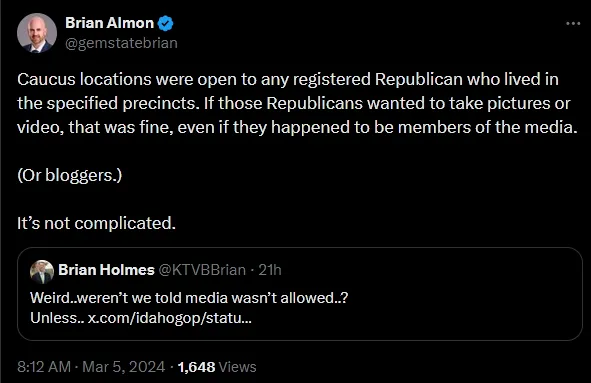
The fact that many journalists consider themselves to be a special class of people is a discussion for another day. The rules were clear: only registered Republican voters were allowed to come in to their neighborhood caucus locations. I was a captain at the location where I would have voted anyway, and the same went for all the volunteers who were there.
As we prepared to open, I showed my ID to the volunteer running my precinct’s poll book, signed my name, and got a red stamp, the same as everyone else. Later in the afternoon, when there was a lull in the action, I showed my stamp to the ballot master, received my ballot, and got a black stamp to show I had voted. I then cast my ballot in the same manner as everyone else.
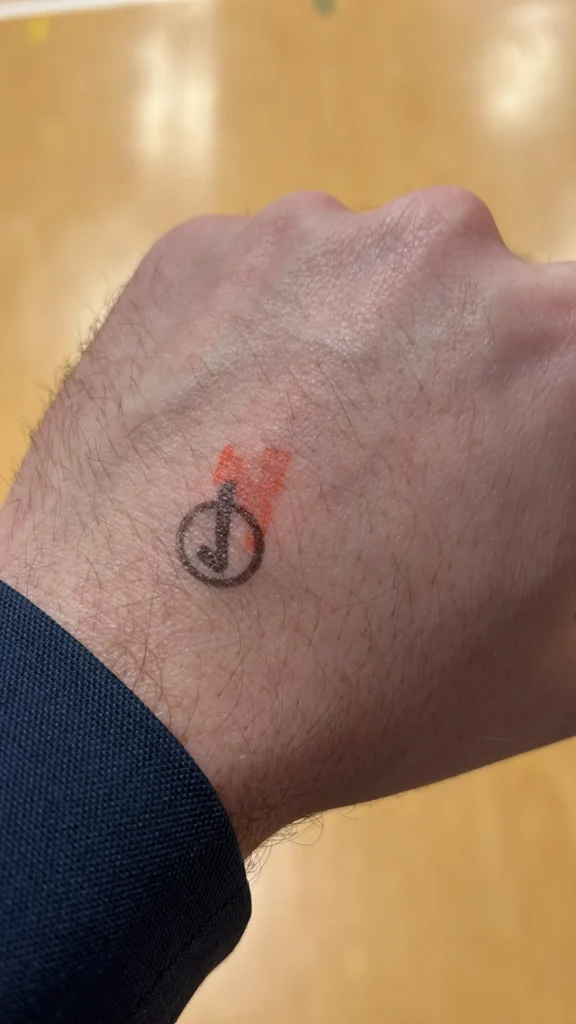
I suggest that the 2024 Idaho Republican Presidential Caucus was a resounding success. Nobody knows what the next four years will bring, but I think the Idaho GOP is well prepared no matter what happens. If circumstances demand a party-run caucus once more, I believe the staff and volunteers will rise to the occasion, taking what they learned this year and making it even better.
We remain at an impasse with regards to how the Idaho GOP should handle the presidential primary. March is too early for legislative primaries, as it leaves no time for incumbents to campaign. May is too late for the presidential primary, as the nomination is almost always sewn up by then. Even April, which was suggested by Rep. Jim Guthrie this year as a compromise, only makes both elections worse.
It might be the case that the party is once again called upon to handle its own electoral process, and if so I foresee an even greater success. While a party-run caucus will likely never have the same level of turnout as a government-run primary, it would free the party from the devil’s bargain of taking public money.
I commend Dorothy Moon, Brent Regan, Kiira Turnbow, Machele Hamilton, Laurel Morgan, Steve Bender, and the many hundreds of volunteers who came together to make this caucus happen. Last Saturday was a reminder that it is the people who are truly sovereign, and that we the people do not need to wait for permission or direction from a central government to get things done.
Paid subscribers head over to Substack for a bonus note. Not subscribed? Click here to change that.







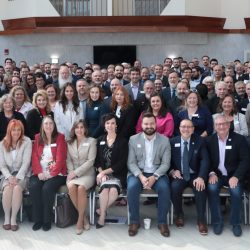

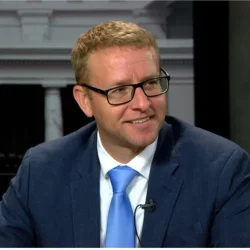

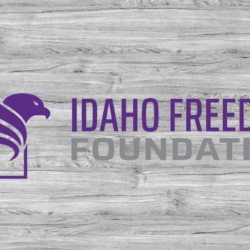
I hope the Idaho GOP continues to do a caucus.